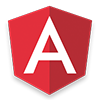After running the ionic start command, the Ionic CLI will generate a handful of files & folders for your new app. They span across a couple of different aspects of your hybrid app development and are worth being aware of.
Lets break them down one by one:
bower.json: Used for managing your app's dependencies via the bower package management tool. By default, the Ionic Framework is the only dependency, but you can add more as needed.
config.xml: This is the configuration file for Cordova. It's used for Cordova plugin management and app settings.
- gulpfile.js: This file is used for compiling SASS and other Ionic Framework specific tasks via the gulp task runner.
- ionic.project: This is used for the configuration of the ionic CLI tool. You can learn about some of the configuration options available here.
- package.json: All of your npm dependencies are stored in this file.
- /hooks: This directory stores any Cordova Hooks that you may have.
- /plugins: Any Cordova Plugins that you install will be saved in this folder.
- /scss: Stores Ionic's SCSS file, but you can (optionally) put your own SCSS files in there too.
- /www: This contains the meat of our Ionic application; you'll be spending most of your time in here.
- /css: Where you should store your CSS files.
- /img: Where you should store any image assets.
- /js: All of your Javascript files will be place in here. It typically is scaffolded with an app.'s file, and sometimes will have controllers.js for your app's controllers and a services.js for any services you have.
- /lib: Any external libraries will be placed in here. To start, only Ionic shows up in this folder.
- index.html: This is the starting point for our application. It will load up all of the necessary JS, HTML and CSS files. Whenever you create a new Javascript or CSS file, you will need to ensure you are linking to it from the index.html file.


 There's more to learn!
There's more to learn!